Built to meet the lower power-classed traffic demands of the London, Midland and Scottish Railway, the Ivatt Class 2s would not only modernise and improve stock on the LMS but form the basis for the future British Railway Standard Class 2s.
Once looking through the class’ working life, we will then see how preservation has been spent for each surviving engine.
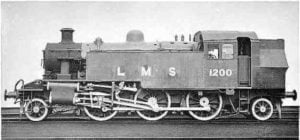
LMS Ivatt 2 (2-6-0 and 2-6-2T)
Ivatt’s couple of years as Chief Mechanical Engineer was unexpected, as it was only Fairburn’s sudden death which lead to the Ivatt being chosen as CME.
In his roughly a year of leadership, Fairburn had only managed to completed one steam locomotive design, his class 4P 2-6-4 Tank, a development on Stanier’s version. Ivatt soon started looking at traction demands and where new engines would be needed, promptly started designing.
Engines with a power classification of two were essential for hauling light trains or tracks which banned heavy axle loaded engines. Despite this, in the post-war 1940s conditions saw many older classes of 0-6-0s still in steam carrying out these important duties. Ivatt, therefore, went to the drawing board and begin designing a new class to take over from ageing fleet of power class two locomotives.
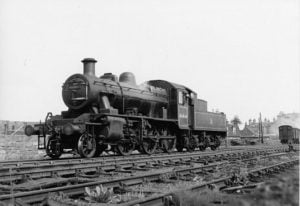
The basic dimensions and features of 2-6-0 class include: 2-6-0 wheel arrangement (coupled wheels – 5 foot (ft), leading truck – 3ft), LMS Typeny boiler pressed at 200 lbf/in2, two outside cylinders (16 in diameter and 24in stroke) worked by Walschaerts valve gearing, total weight came in at 47.10 long tons (engine only) and a tractive effort of 17,410 lbf (BR 2MT). The class held 4 Tons of Coal and 3000 UK Gallons, tender loaded weight 35.15 long tons.
The basic dimensions and features of 2-6-2T class include: 2-6-2T wheel arrangement (coupled wheels – 5 foot (ft), leading and trailing truck – 3ft), LMS Typeny boiler pressed at 200 lbf/in2, two outside cylinders (16 in diameter and 26 in stroke) worked by Walschaerts valve gearing, total weight came in at 63.25 long tons and a tractive effort of 17,400 lbf (BR 2MT). The class held 3 Tons of Coal and 1350 UK Gallons).
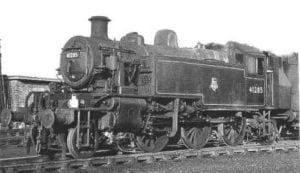
Design and Construction
First off, a 2-6-0 and 2-6-2T wheel arrangements were chosen. The 2-6-0s would have a good range from the tenders fitted along with the leading truck for better stability. Based on previous tank designs from Fowler and Stanier, Ivatt’s 2-6-2Ts would incorporate modern equipment such as self-emptying ashpans and rocking grates which reduced ‘down time’. On top of this, the classes featured many standard parts to reduce costs and speed up production.
Crewe Locomotive Works started construction of both classes in 1946, with other locomotive works building engines after the formation of British Railways in 1948. Below are the lists of date, manufacturer, lot number, engine numbers and quantity.
2-6-0s
- 1946 Crewe – Lot 182 – No.6400 to 6409 (BR No.46400 to 46409) – 10 engines
- 1947 Crewe – Lot 189 – No.6410 to 6419 (BR No.46410 to 46419) – 10 engines
- 1948 Crewe – Lot 194 – No.46420 to 46434 – 15 engines
- 1950 Crewe – Lot 201 – No.46435 to 46449 – 15 engines
- 1950 Crewe – Lot 207 – No.46450 to 46459 – 10 engines
- 1950 Crewe – Lot 208 – No.46460 to 46464 – 5 engines
- 1951 Darlington – Lot 1309 – No.46465 to 46482 – 18 engines
- 1951-52 Darlington – Lot 1310 – No.46483 to 46502 – 20 engines
- 1952-53 Swindon – Lot 394 – No.46503 to 46527 – 25 engines
2-6-2Ts
- 1946-47 Crewe – Lot 181 – No.1200 to 1209 (BR 41200 to 41209) – 10 engines
- 1948 Crewe – Lot 195 – No.41210 to 41229 – 20 engines
- 1949 Crewe – Lot 204 – No.41230 to 41259 – 30 engines
- 1950 Crewe – Lot 209 – No.41260 to 41289 – 30 engines
- 1951-52 Crewe – Lot 225 – No.41290 to 41319 – 30 engines
- 1952 Derby – Lot 225 – No.41320 to 41329 – 10 engines
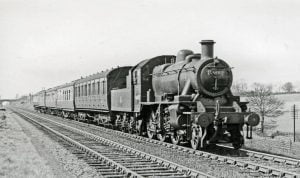
46403 // Credit Ben Brooksbank
Performance in Service
In the remaining two years of the LMS, both classes spread out across the LMS track, mainly taking up branch line and secondary route traffic. Engines built outside the London Midland Region in BR days would usually stay in the region they were built. For instance, most of the Swindon-built batch of 2-6-0s started their working lives at Oswestry, later being transferred to other Western Region sheds. These engines did also receive some Ex-Great Western equipment, like vacuum ejector. Both 2-6-0s and 2-6-2Ts put in good performances across BR’s network. Issues with draughting were resolved early on in their careers. A few batches of the tanks were fitted with ‘push-pull’, allowing them to operate as a train from both ends, with a specially designed carriage.
Decline and Withdrawal
Following the release of Beeching’s report, many branch lines and secondary routes would be closed along with the withdrawal of all standard gauge steam locomotives. For the Ivatt 2s, this meant allocation changes in the short term and withdrawal starting in 2-6-0 No.46407 in 1961. By 1967 all 258 engines from the two classes had been removed from traffic.
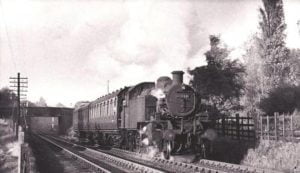
Preservation
Through individuals, groups and Barry Scrapyard, we are lucky that examples of Ivatt’s designs survive to the 21st century. Seven 2-6-0s and four 2-6-2Ts can be found today on various heritage railways across the country.
2-6-0s
- 46428 – Currently Undergoing Restoration at the East Lancashire Railway, Owned by the Bury Standard 4 Group. Spending a working life of just under 18 years across a few of BR’s regions, 46428 was withdrawn in December 1966 and purchased for scrap by Dai Woodham. 13 years passed before the Strathspey Railway brought the engine for its boiler. Following the decision to not use the boiler, the locomotive without tender was due to be put up for sale, which is when in 1987 the Bury Standard 4 Group raised funds and brought 46428. Since then, the Ivatt 2 has been stored at the ELR while restoration of 80097 is completed, which as of early 2019 80097 has entered traffic. Recent work on 46428 has seen measurements taken for new frame sections to be built. For more information or to support 46428, please visit the Bury Standard 4 Group here.

46428’s Frame // Credit Bury Standard 4 Group - 46441 – Static Display at the Lakeside and Haverthwaite Railway, owned by Chris Beet. Roughly 17 years 46441 spent working on BR spending its time in London Midland Region. Luckily for this Ivatt 2, a private owner named Chris Beet brought the locomotive on withdrawal in April 1967. 46441 was based at Carnforth’s Steamtown, hauling mainline tours. For a time in the 1990s, the engine was the smallest mainline locomotive. The last steaming occurred in 2002, with 46441 since being displayed. There are currently no plans to overhaul the engine.
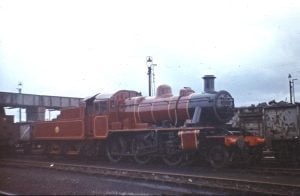
46441 // Credit Ribble Steam Railway - 46443 – Static Display at the Severn Valley Railway, Owned by the SVR 46443 Fund. Following a similar working life and start to the preservation, 46443 became one of the first two engines to run on the SVR Heritage Railway when owner Richard Willcox obtained it in 1967. Five years later the Severn Valley Railway brought the engine for use on the line. 1983 the SVR sold 46443 in order to see LMS Jubilee “Leander” join the line. Many SVR fans at the time wanted the Ivatt to return, leading to the SVR 46443 Fund’s creation and successful fund-raising resulting in 46443 purchase.
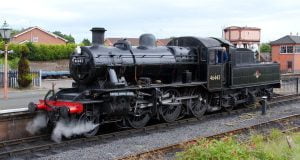
46443 at Kidderminster SVR // Credit Tony Hisgett - 46447 – Operational on the East Somerset Railway in BR Lined Black with Late Crest, Owned by the Isle of Wight Steam Railway. Working mostly in the North of England, then moving down to the Midlands, 46447 was withdrawn in December 1966. The engine only spent 6 years in the famous scrapyard before being purchased by the Ivatt Locomotive Trust in 1972 and moved to the Buckinghamshire Railway Centre. Restoration was started despite the engine’s poor condition but the trust later decided to sell 46447 to the Isle of Wight Steam Railway in 2008, where the locomotive was cosmetically restored and displayed. Just four later, a deal with the East Somerset Railway and Isle of Wight Steam Railway saw the Ivatt 2 head back to the mainland for full restoration and loan-term use on the ESR. Boiler ticket expires in 2024 for more information please click here
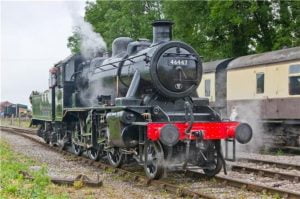
46447 at Cranmore, ESR // Credit Unknown - 46464 – Under Restoration at a private site, owned by The Carmyllie Pilot Company Ltd. 46464 spent most of its working life in the Scottish Region and despite being damaged in 1964, was repaired and later preserved by Ian Fraser straight from BR. Ian donated the Ivatt to the Dundee City Corporation for display purposes but was stored instead. The Strathspey Railway was then loaned the locomotive, overhauling 46464 to full running order in 1978. Following roughly a decade of running, the locomotive was withdrawal due to firebox issues came, with the engine needing a overhaul. The Ivatt was returned to Ian Fraser, who move the locomotive to the Caledonian Railway. Following the death of Ian, the Caledonian Railway said they wouldn’t have the resources to overhaul the engine. Shortly after this announcement, The Carmyllie Pilot Company Ltd was formed and purchased the engine to overhaul and run 46464. Recent work on the engine has seen the rear buffer plank attached to the engine’s frame. For more information please visit The Carmyllie Pilot Company Ltd’s Facebook Group here or their website here
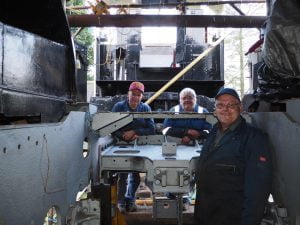
Working on 46464 // Credit The Carmyllie Pilot Company Ltd - 46512 – Operational on the Strathspey Railway in BR Lined Black with Early Crest, owned by the Strathspey Railway. Built by Swindon Works, 46512 spent its early working life on the Western Region, ending its days on the London Midland Region. Leaving Barry in 1982 for restoration at the Severn Valley Railway, a change of ownership saw the engine move to the Strathspey Railway where restoration was completed in 1999. Unfortunately, the first boiler ticket was cut short in 2005, with 46512 being withdrawn from service for repairs and an overhaul. Early 2011 saw the locomotive back in service.
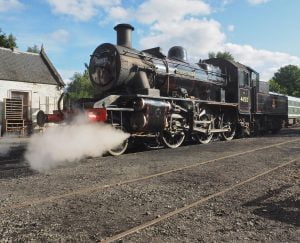
46512 “E. V. Cooper Engineer” // Credit The Carmyllie Pilot Company Ltd - 46521 – Operational on the Great Central Railway in BR Lined Green with Early Crest, Owned by Charles Newton and Loughborough Standard Locomotives Group Ltd (50/50). Following a similar working career to 46512, withdrawal for 46521 came in March 1967. Although only spending 4 years at the Woodham’s scrapyard, many parts had been removed, slowing down restoration. Despite this in July 1974 the Ivatt was back in steam, steaming for the whole 10 years of its first boiler ticket in preservation. Following 7 years out of traffic undergoing overhaul, 46521 was back hauling trains in 1991 with the following year seeing the Ivatt out on the mainline. By 2000 the engine was withdrawn again needing an overhaul. Following discussions, Charles Newton made a deal with Loughborough Standard Locomotive Group Ltd (LSLG) which saw ownership split 50/50 and LSLG would overhaul the engine at the Great Central Railway. Initial work was slow while LSLG completed their other locomotive 78019, along with more work than expected needed on 46521 saw the engine return to steam in 2011. For more information please visit the Great Central Railway’s website here
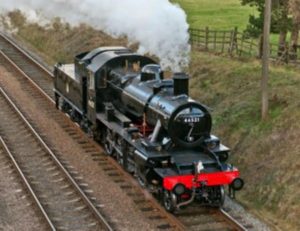
46521 at GCR // Credit GCR
2-6-2Ts
- 41241 – Operational on the Keighley and Worth Valley Railway in K&WVR Maroon, Owned by Keighley and Worth Valley Railway. Being based around the London Midland Region, 41241 was purchased for preservation in 1967 by the founding members of the K&WVR and hauled the first passenger train along the newly preserved line on the 29th June 1968, wearing the K&WVR’s own livery. The tank ran in this livery for its first boiler ticket. When returning from overhaul in 1980, the Ivatt was repainted into BR Lined Black, which its carried right up until its last overhaul. 41241 was overhauled in time to celebrate 50 years of the K&WVR in June 2018, wearing the Maroon livery. Current boiler ticket expires in 2027. For more information please visit the Keighley & Worth Valley Railway’s website here
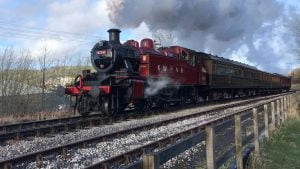
Credit: RailView - 41298 – Operational on the Isle of Wight Steam Railway in BR Lined Black with Late Crest, Owned by the Isle of Wight Steam Railway. 41298 spent its working career mainly shunting empty stock and piloting duties. The Ivatt Locomotive Trust brought the tank straight from BR in running order, being initially based at Longmoor Military Railway then Buckinghamshire Railway Centre. 2009 saw ownership transferred to the Isle of Wight Steam Railway, with its last overhaul completed in Autumn 2015. Current boiler ticket expires in 2025. For more information please visit the Isle of Wight Steam Railway here
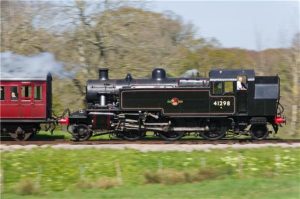
41298 at the Isle of Wight Steam Railway in 2016 // Credit Isle of Wight Steam Railway - 41312 – Operational on the Mid Hants Railway (The Watercress Line) in BR Lined Black with Late Crest, Owned by the Mid Hants Railway. Based on the Southern Region for its 15 years on BR, 41312 entered Barry in 1968. After a couple of decades left in Ex-Barry condition, a change of ownership saw John Jones bring the engine to the Mid Hants Railway in 1995, where 4 years later 41312 was back in steam. Working the full 10 years of its boiler ticket, the Ivatt was withdrawn in 2009. Stored for a few years, the locomotive was overhaul and back in traffic in Early 2016. Current boiler ticket expires in 2025. For more information please visit The Watercress Line’s website here
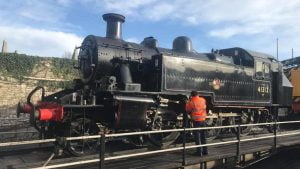
41312 ready for the journey home // Credit Peter Harris - 41313 – Operational on the Isle of Wight Steam Railway in BR Lined Black with Early Crest, Owned by the Isle of Wight Steam Railway. This Ivatt never ventured too far away from London end of the Southern Region. When withdrawal came in Early 1966, the engine was towed to the yard. In 1975, the Ivatt Locomotive Trust purchased 41313 as spared for 41298 and moved to the Buckinghamshire Railway Centre. With the Trust transferring ownership of it’s assists to the Isle of Wight Steam Railway, 41313 fate changed and was restored to full running order in June 2017. Current boiler ticket expires in 2027. For more information please visit the Isle of Wight Steam Railway here.

No.41313 // Credit Jamie Duggan, RailAdvent
We hope you have enjoyed this week’s Class Information, watch out for the next Sole Survivor coming out soon.
Where Next?
News Homepage
For the Latest Railway News
RailAdvent Online Shop
Framed Prints, DVD’s / Blu-Ray’s and more
LocoStop Community
Come and share your railway pictures


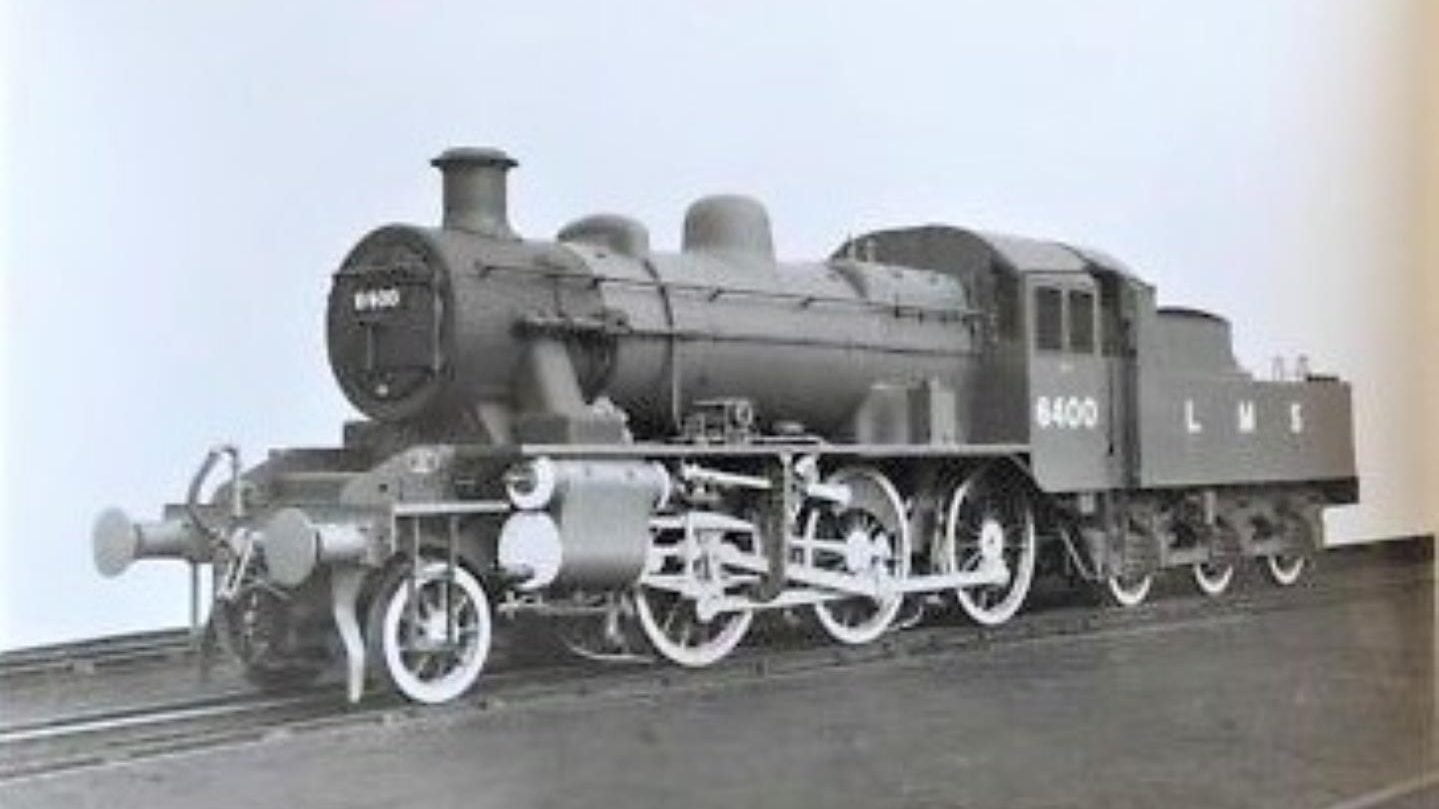


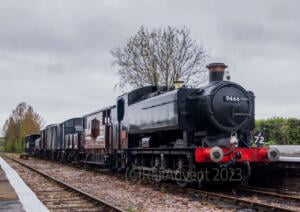
Responses
re 46441 boiler being overhauled by west coast railways before returning to the LHR
Glad you liked my piece on the 41 ivatt,not so big and impressive as some! like our merchant navy w/country n such,but my favourite none the less,never any trouble/a workhorse! After 5 yrs I left the southern with a first preference for Bristol,which I got,mostly steam out of barrow rd, where I had my one n only accassion to stop for steam or drop a plug!the royal mail train too,the shame of it (6inches of clinker like concrete on the bars didn’t help).Nights would often be to take 6 dead but entire locos to the welsh scrapyards (more shame)usualy with n old austerity or something,but the noise of those dead engines deep in the severn tunnel was something else !! oops out of space/take care.
At which works were the Ivatt 2-6-2Ts overhauled? I’m particularly interested in No 41247 whose allocation was Manningham, Neville Hill and finally Malton
Loved these Ivatts, fired the 2-6-2Ts (41s)for must be 1000s of miles over 2-3 years on Passenger Branch lines. Cleaned their fires/bars, topped up boiler and put them to bed every night on late turns, Iv a photo on 41321, I hope I didn’t take it to the scrap yard like so many I took through the severn tunnel from my last yard at Barrow Rd steam depot Bristol ! 1965/66/67. Working from Bath Road Depot nr Templemeads..Then had to get used to the introduction of the green warship class and maroon 1000 type which was boring and smelly! /Diesel….
I worked at 55C for a year and did my very first turn, after being made passed cleaner, on one of the 2-6-2Ts. Station pilot at Leeds City station on a Saturday night – fine little engines.
I’ve written about my footplate life 62 – 68 in the books In Memory here’s a link to them. https://www.amazon.co.uk/Memory-Carl-David-Wilson-ebook/dp/B07HMKTWMT
Very interesting. I have 46521 in Hornby 00.